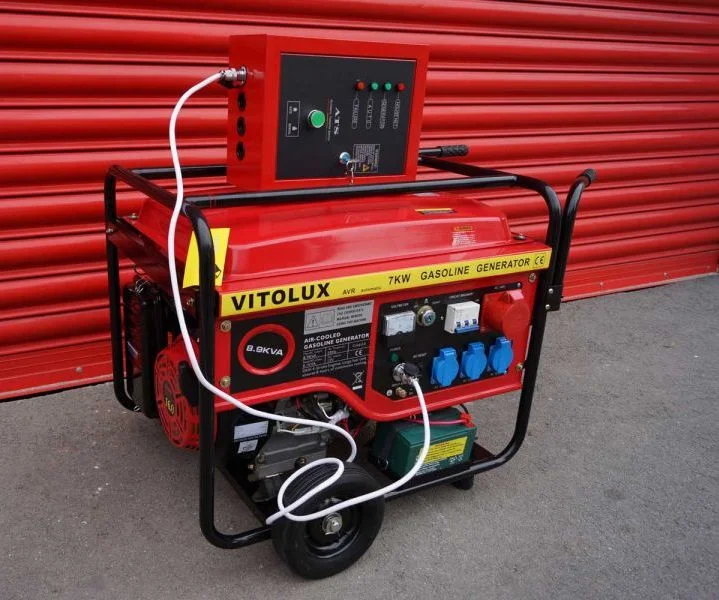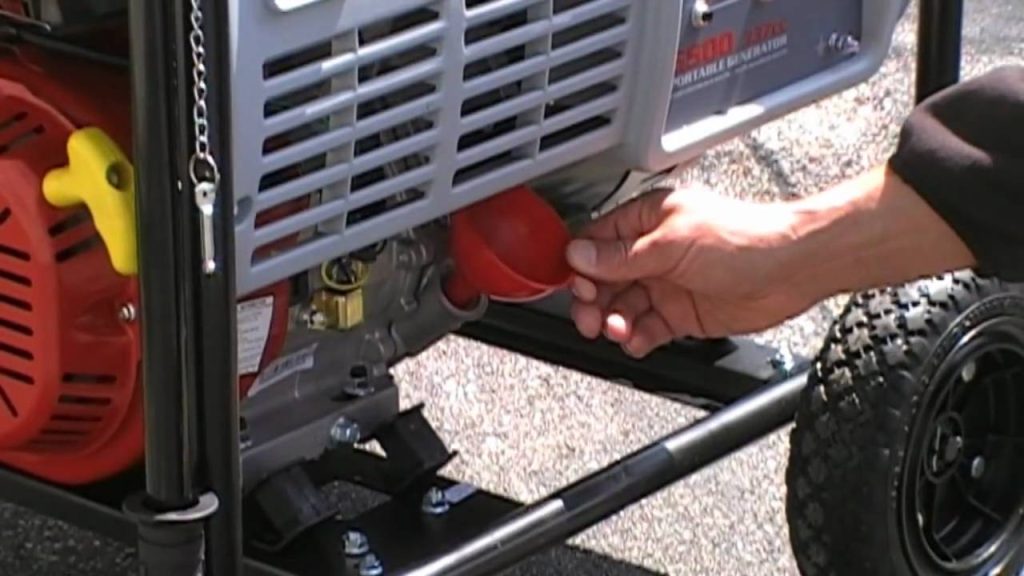It might seem easy to start a generator for the first time. But starting a generator is tricky and needs proper knowledge. If you do something wrong it can damage your machine and health! You don’t want any hazards, right? So how to start a generator for the first time?
In this article, I will explain how to start a generator for the first time with the break-in generator process. Read on to eliminate risks!
How to Start a Generator for the First Time- A Complete Guide
There are a few types of generators available. You should buy a generator based on your needs. I will explain the starting procedure of both Autostart Function(ATS) and Manual start generator.
Later, you will have the gasoline, natural gas, and diesel generator starting guide.
1. Auto Start Generator (ATS)

ATS generator ensures a continuous power supply. It acknowledges the power cut and automatically starts supplying power.
Let’s see how to start it for the first time.
- Check the battery charge, oil, and fuel levels are perfect for a smooth start. Most generators come with very low or without oil. It can ruin your machine if those are not accurate
- Find out the control panel of your generator and connect it to the main power supply with the heavy-duty cables
- Attach the generator’s power output to the electrical distribution board of your facility
- Now find the toggle switch and select Auto mode to enjoy its automated feature.
- Identify the socket of your generator’s control panel. Place the start key in it with a proper fit
- The power reserve should be around 25%. Determine the power consumption of given connections to ensure it doesn’t exceed the generator’s capacity.
2. Manual Start

This is the most common version of the generator commercially available. To start these generators for the first time:
- Make sure the engine oil level is not high or too low
- Fill the tank with fuel and close the tank properly
- Close the air damper before starting to ensure the airflow
- Pull the recoil starter firmly to start the engine
- Let the machine run for 2-3 minutes to warm the generator
- Now open the air damper. A Better air-fuel ratio leads to a smooth run
How to Start a Generator for the First Time – Gasoline, Diesel, Natural Gas Generators
Gasoline Generator
- Place the generator on a level and stable surface for the best fuel circulation
- Turn the fuel valve to the “ON” position
- You must close the air valve
- Adjust the Choke half to open for a cold engine fully
- Pull the recoil starter 2-3 times to start the generator
- Break in the generator and then connect the devices depending on your needs
Diesel Generator
- Keep the generator on a well-ventilated and steady surface
- Read the manufacturer’s manual of your generator and fill the fuel tank accordingly
- Open the fuel valve to run the oil in the engine
- Activate the glow plug to preheat the combustion chamber
- Now switch on the start button if available or pull the recoil starter
Natural Gas Generator
- Place the generator outside of your home
- Ensure the fuel valve is in the “On” zone
- The key in the ignition switch should be on
- Some natural gas generators don’t include any Choke. Adjust it if there is a Choke in your generator
- Pull the starter cord and after warming up the engine close the choke
- Give connection after breaking in the generator
I have covered the starting manual for the most common forms of generators. Follow this guide for starting your generator for the first time.
Breaking in a Generator
A new generator needs to break in. You have to run the generator for a certain time period with low to higher loads. The breaking in generator operation ensures optimal performance by setting all the components right.
Here is how you can break in the generator:
The Manual Reading
You can find lots of breaking in the process with different types of oils. That information is right maybe. But for the tailored info about your generator breaking in you must read the manual that comes with your generator.
It will help you select the oil type, time duration, and any other caution you need to follow.
Oil Pouring

Pour engine oil into the engine of your newly bought generator. Read the manufacturer’s manual for knowing how much oil you need.
Be careful about overfilling the engine. Close the cap of the engine oil tank properly.
Variant Loading
Now you have to put lower loads at first and gradually increase the load. This is a primary requirement for the breaking in generator operation. If you have higher loads your generator can collapse.
Time Setting
The breaking-in generator process should last at least 50 minutes. Don’t put any load in that time. I recommend changing the oil after the first hour. It cleans any residue or imposter from the engine.
Cool the Generator
The engine shouldn’t run for long on the first go. Use a shorter running cycle with breaks. A break will allow your generator to cool down.
Well, you are done with the break-in generator operation. It’s time for you to enjoy the fullest and finest service from your generator.
Caution
Always place your generator in a well-ventilated area. Keep it at least 15 feet away from your home. The generator creates carbon monoxide in the process of generating electricity. It is highly poisonous for humans.
The Price Range Of The Generators
I am adding a table to give you an idea of the price range of different generators.
| Generator Type | Fuel Type | Voltage | Best Fit | Price Range (USD) |
| Gasoline Generator | Gasoline | 120V/240V | Camping, Small Power Needs | $200 – $800 |
| Diesel Generator | Diesel | 120V/240V | Construction Sites, Backup Power | $1,000 – $10,000 |
| Natural Gas Generator | Natural Gas | 120V/240V | Residential, Continuous Power Supply | $2,000 – $15,000 |
| Propane Generator | Propane | 120V/240V | Outdoor Events, Backup Power | $500 – $3,000 |
| Inverter Generator | Gasoline | 120V/240V | Camping, Sensitive Electronics | $300 – $2,000 |
| ATS (Automatic Transfer Switch) | Gasoline, Diesel, Natural gas | 120V/600V | Residential, Commercial Buildings | $500 – $3,000 |
| Manual Generator | Gasoline/Diesel | 120V/240V | Construction Sites, Off-Grid Power | $500 – $5,000 |
Conclusion
I’ve given a guide for the break in the generator and starting a new generator process in this article on how to start a new generator. These easy steps will help your generator to run longer with no difficulties.
The price table also gives a clear picture of the prices of various generators. You can choose the one that suits you best. Enjoy the service of your new generator.
FAQ
What is the purpose of an Automatic Transfer Switch (ATS)?
The ATS generator automatically switches the electrical load from the primary power source (utility grid) to a backup power source (generator). So you get an uncut power supply.
Can I plug appliances directly into the generator?
Yes, you can plug appliances directly into the generator. But check the generator’s wattage capacity and ensure that the combined power requirements of the appliances do not exceed the generator’s rated capacity. Use high voltage cords and follow safety guidelines to avoid consequences.
Why breaking in the generator is important?
The break-in period in a generator is important to allow the engine components to align and reduce premature wear properly. The break-in generator ensures optimal performance and longevity.
